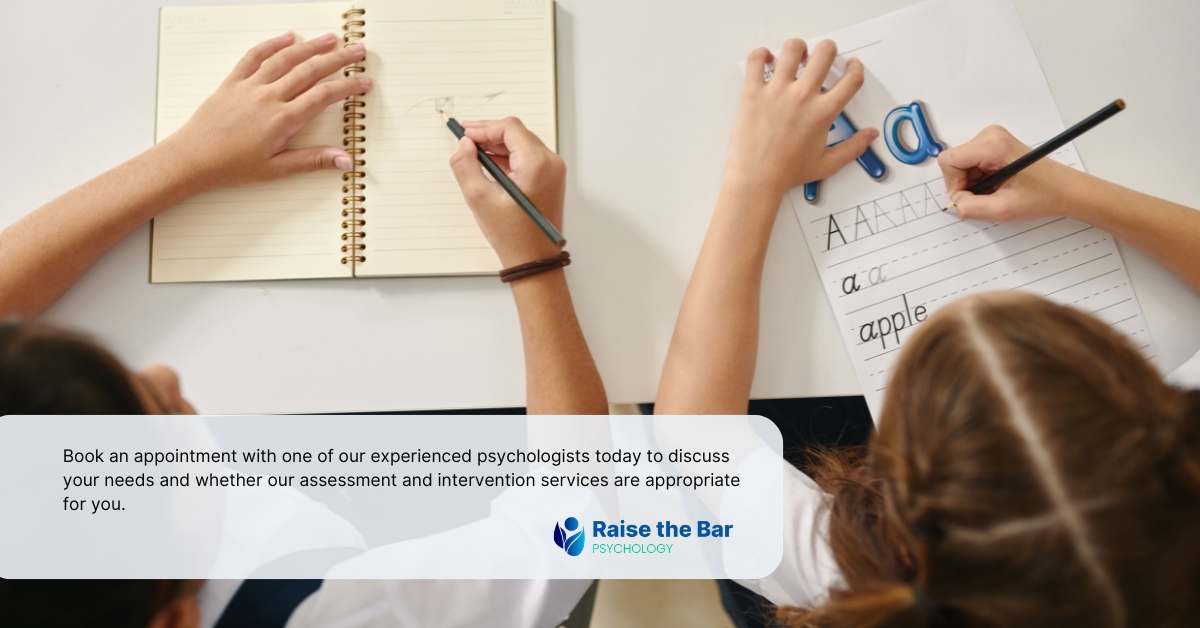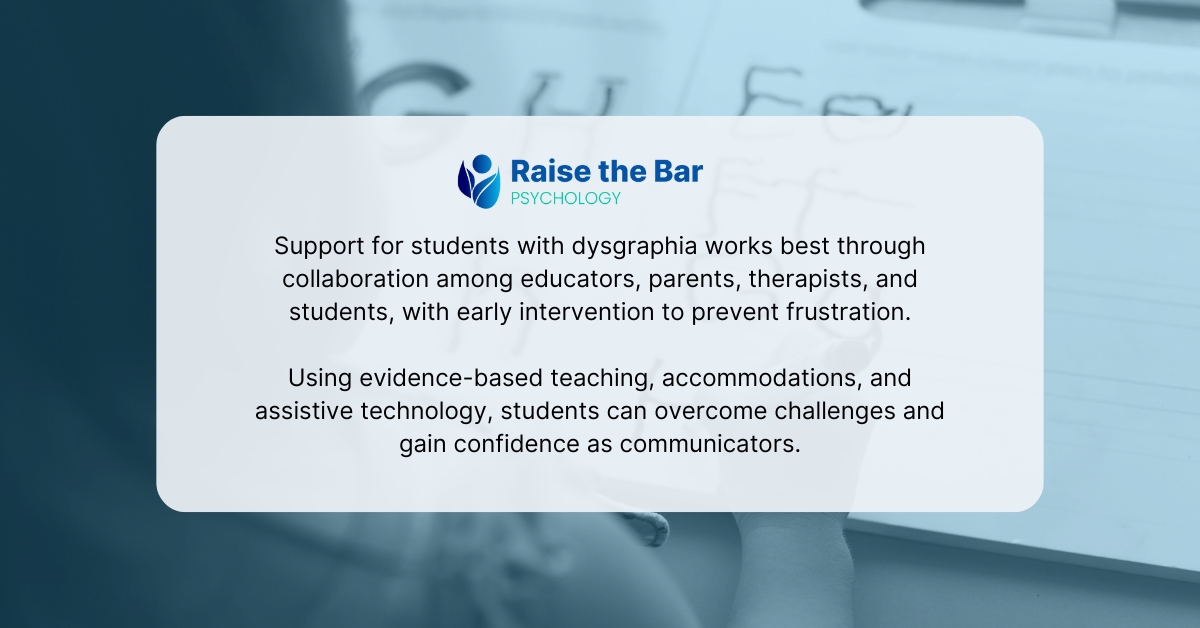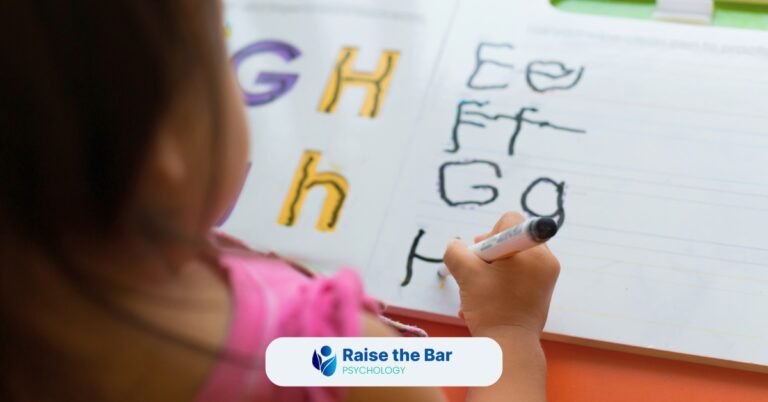Imagine being full of ideas but unable to get them down on paper. That’s what life can feel like for a student with dysgraphia.
While other students quickly jot down notes or complete writing assignments, those with dysgraphia can struggle with the basics—letter formation, spelling, or even holding a pencil correctly—as well as the more advanced aspects of writing, including grammar, sentence structure, and organisation and clarity of ideas. It’s not a lack of intelligence or effort. It’s a neurological difference that affects written expression, and it can leave a student feeling frustrated, behind, or even ashamed.
But here’s the good news: with the right support, students with dysgraphia can thrive.
The key is knowing what works—not guesswork or generic advice, but interventions grounded in research and proven in classrooms.
Whether you’re a teacher, parent, or support professional, understanding these strategies could make all the difference for a child who’s been silently struggling for far too long.
Foundational instructional strategies for supporting students with dysgraphia
Explicit and systematic instruction is paramount for students with dysgraphia. Rather than assuming a natural acquisition of writing skills, educators should break down the writing process into manageable components.
1. Handwriting instruction
- Verbal cues and mnemonics: Providing memorable phrases or “scripts” for forming letters (e.g., “Magic C, up like a helicopter, back down, and bump”).
- Sky writing and large motor practice: Having students form letters in the air with their whole arm or on a large surface like a whiteboard before transitioning to paper.
- Tactile experiences: Using materials like sand trays, shaving cream, or textured paper to provide sensory feedback during letter formation.
- Focus on fluency: Once letter formation is mastered, activities that build automaticity, such as timed writings of familiar letters and words, can be beneficial.
2. Spelling and orthographic knowledge
- Structured literacy programs: Programs that are systematic, cumulative, and explicit in teaching phonology, morphology (word parts), and orthography (the rules of spelling) have shown significant success.
- Simultaneous oral spelling (SOS): This technique involves the student saying the letter names as they write them, reinforcing the connection between the spoken and written word.
- Word sorts and pattern recognition: Activities that encourage students to categorise words based on spelling patterns can help them internalise orthographic rules.
3. Written expression
- Graphic organisers and scaffolding: Providing visual frameworks like story maps, concept webs, and outlines helps students organise their thoughts before and during writing.
- Sentence and paragraph frames: Offering sentence starters and structured paragraph templates can provide a supportive scaffold for expressing ideas.
- The POWER strategy: This acronym guides students through the writing process: **P**lan, **O**rganise, **W**rite, **E**dit, and **R**evise. Explicitly teaching each of these stages is critical.
Assistive technology for supporting students with dysgraphia
-
Speech-to-text software
This technology allows students to dictate their thoughts and have them transcribed into text, effectively bypassing the physical act of writing. Popular options are readily available on most computers and mobile devices.
-
Word prediction software
These programs suggest words as a student types, reducing the number of keystrokes needed and assisting with spelling.
-
Graphic organiser and mind-mapping software
Digital tools can help students brainstorm and structure their ideas visually before writing.
-
Proofreading and grammar-checking software
Advanced grammar checkers can provide immediate feedback on sentence structure, punctuation, and style, helping students to edit and revise their work more independently.
-
Optical character recognition (OCR)
This technology can scan printed text and convert it into a digital format that can be read aloud or edited, reducing the need for copying.
Classroom accommodations for supporting students with dysgraphia
-
Extra time
Allow extra time for tests and tasks to relieve stress and allow for more deliberate responses.
-
Quality over quantity
Reduce the amount of written output a student is expected to produce within the time frame (e.g., one page instead of two), valuing quality over quantity.
-
Note-taking assistance
Provide printed notes, fill-in-the-blank worksheets, or let pupils photograph the board.
-
Reduced copying
To avoid having to copy from the board, differentiate instruction by offering handouts, pre-filled worksheets, or lecture summaries.
-
Choice of writing style
Allow kids to use either print or cursive, depending on which is most readable and comfortable for them.
-
Choice of writing tools
Allowing students to experiment with different types of pens, pencils, and grips to find what is most comfortable. Allowing the student to type their responses instead of handwriting them is another option.
-
Alternative assessments
Consider alternative assignments to written ones that can help a student with dysgraphia demonstrate their knowledge without being penalised for their writing difficulties. For example, oral presentations or creating a comic or story book.

Final thoughts
Ultimately, the most effective support for students with dysgraphia comes from a collaborative effort between educators, parents, allied health specialists such occupational therapists and speech pathologists, and the students themselves.
With explicit, evidence-based instruction, appropriate accommodations, and the strategic use of assistive technology, students can overcome their writing challenges and reach their full academic potential.
It is crucial to identify and intervene early, ensuring that students receive the support they need before frustration and low self-esteem take root.
By focusing on strengths and providing the right tools and strategies, we can help students with dysgraphia unlock their voices and become confident and capable communicators.
Book an appointment with one of our experienced psychologists today to discuss your needs and whether our assessment and intervention services are appropriate for you.
Author
-

Dr Kate Jacobs
Director / Educational and Developmental PsychologistDr Kate Jacobs completed a combined PhD/Masters in Educational and Developmental Psychology at Monash University in 2013. She was awarded the Mollie Holman Doctoral Medal for the best PhD thesis in the Education Faculty for the year.




